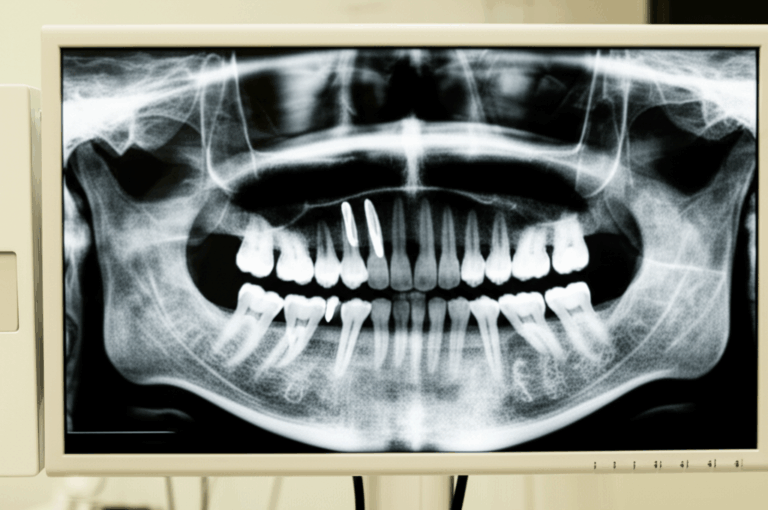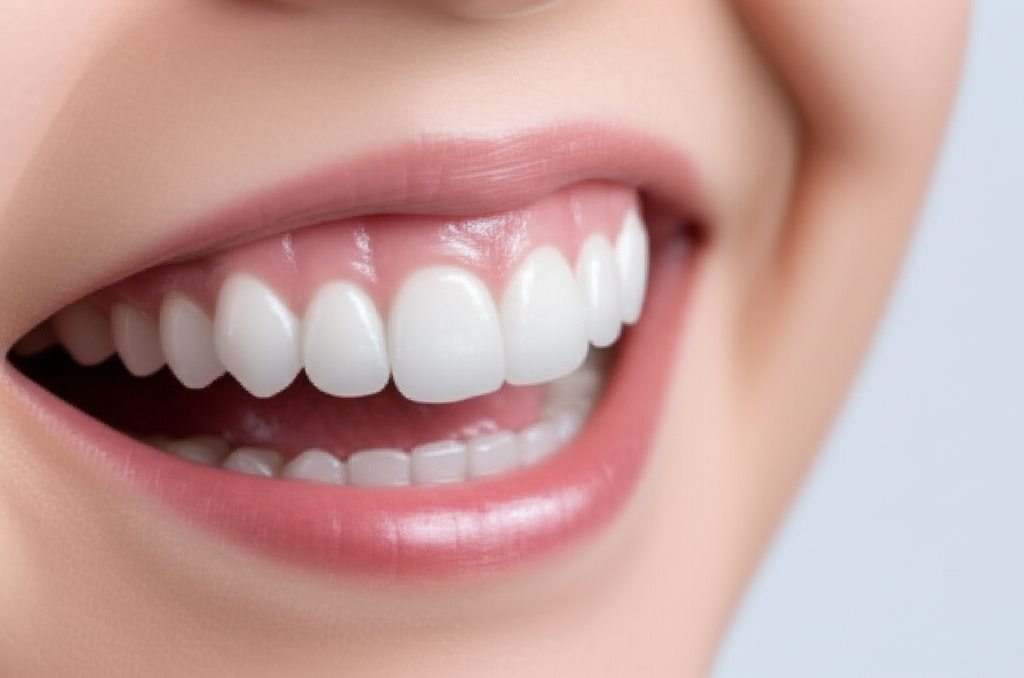
Not Enough Jaw Bone for Dental Implants? Your Options & Solutions
Every smile tells a story. But what if you’re missing teeth, and your dentist says you don’t have enough bone for dental implants? Don’t worry. This article shows why bone is so important, what causes bone loss, and—most importantly—what you can do about it. If you’re feeling stuck or worried about your choices, keep reading. You’ll learn real answers that can bring back your confidence and your smile.
Table of Contents
Why Is Bone Important for Dental Implants?
If you want a strong, natural-looking smile, you might already know that dental implants are a good choice. Implants act as new “roots” for missing teeth. But here’s the thing: they need enough bone to stay in place. The jaw bone, also called the alveolar bone, holds the implant so it doesn’t move or fall out.
Think of your jaw like the base of a house. Without a solid base, a house can’t stand. If there isn’t enough strong bone, your implant has nothing to grab on to. That’s why your dentist checks your bone thickness and how hard it is before any surgery.
Now, you might think, “Can I still get implants if I don’t have much bone?” The good news is—yes, there are answers!
What Causes Bone Loss in the Jaw?
Losing jaw bone isn’t rare, but it can happen before you know it. Here are some common reasons:
- Tooth loss: When you lose a tooth, the bone under it isn’t needed anymore. After a while, your body “uses up” the bone. You can lose up to 60% of bone height and width in just one year after losing a tooth.
- Gum disease: This infection destroys the bone around your teeth, making it hard to keep implants steady.
- Accident or injury: Getting hit in the face, falling, or other accidents can hurt your jaw bone.
- Dentures: Wearing dentures for a long time can make your jaw shrink.
- Health problems: Diseases like osteoporosis and diabetes can make your bone weaker.
- Smoking: Smoking slows how fast you heal and hurts bone.
Losing bone is a problem. If you don’t fix it, it can make you feel hopeless about getting implants. But don’t give up. Let’s look at what to do next.
How Do Dentists Check If You Have Enough Bone?
So, you’re worried about not having enough bone for an implant. What’s the first step? Your dentist will do a full checkup and look closely at your jaws.
Step 1: Clinical Exam
Dentists feel and measure your jaw with special tools called dental probes. They look for gum problems and check if you have missing bone.
Step 2: Imaging
Next comes the cool part: a cone beam CT scan (CBCT). This shows a 3D picture of your mouth. The scan shows the bone width, height, and how hard it is. It’s fast, doesn’t hurt, and gives the dentist a map for your treatment.
Step 3: Planning
After your scan, your dentist explains if you need more bone—or if you already have enough! If you need more, don’t stress. Today, dentists have lots of ways to help.
What Is Bone Grafting and How Does It Work?
Bone grafting is a way to rebuild your bone. If your jaw is too thin or short for a dental implant, a dentist can add new bone using a process called a bone graft.
Think of it like fixing potholes in a road before putting down new pavement. Bone grafting fills the gaps and makes a strong base for your future implant.
How Is Bone Grafting Done?
Healing takes time—usually between 4 and 9 months. This gives your new “base” time to get hard before putting in the implant.
Table: Common Bone Grafting Types
| Graft Type | Source | Best Use Case |
|---|---|---|
| Autogenous Graft | Your own bone (jaw, hip, etc.) | Fast healing, works really well |
| Allograft | Human donor (cleaned) | No need for extra surgery spot |
| Xenograft | Animal bone (usually cow) | Good for big repairs |
| Alloplast | Man-made | Good if you don’t want real bone |
What Types of Bone Graft Materials Are There?
Bone grafts use different stuff depending on what you need and what your dentist suggests.
- Autogenous graft (your bone): Doctors take bone from another part of your mouth or body. It’s the “gold standard” because your cells help it heal faster.
- Allograft (donor bone): Comes from a bone bank and is safe, cleaned, and processed.
- Xenograft (animal bone): Strong and good for fixing bigger areas. Your jaw can grow around it.
- Alloplast (man-made stuff): Not from a person or animal and works for many people, especially if you want to avoid real bone.
Each type has good and bad points. Your dentist will help you choose.
What Are Other Solutions If You Lack Enough Bone?
Sometimes, people want options with less cutting or less waiting. Good news: science has come up with new implant answers too.
Mini Dental Implants (MDIs)
MDIs are thinner than normal implants. They’re great for people whose jaws aren’t wide enough for regular implants. Mini dental implants heal faster and getting them put in is easier.
Zygomatic Implants
No bone in your top jaw? No worries! Zygomatic implants are extra-long and go into your cheekbone, which is hard and strong. Even if your top jaw is very weak, these implants give you firm teeth.
Basal Implants
Basal implants use the deep, hard bone in your jaw. They’re good for people with a lot of bone loss who want to skip grafting.
All-on-4 or All-on-X System
This smart system uses just four (or more) tilted implants to hold a full set of teeth. By placing the implants at smart angles, the dentist can “work around” thin parts of bone. Many times, you can get new teeth the same day!
Are There Alternatives to Dental Implants?
Let’s be honest: not everyone wants another surgery. Others might not want to wait months to heal. Here are some proven options.
- Removable dentures: A denture is a set of fake teeth you can take out and clean.
- Dental bridges: A “bridge” sticks to the next-door teeth and fills in the missing spot.
- Living with missing teeth: Some people don’t fix the gap. But this can make chewing harder, other teeth move, and you might lose more bone.
If you want a better fit, consider working with a removable denture lab to custom-make your denture. You’ll get the best fit and natural look.
What to Expect During and After Treatment
Worried about pain and down time? Most bone grafts and implant surgeries are done with numbing shots. You’ll feel some pushing, but not much pain. After surgery, you may have swelling, a bit of pain, or some bruises. Most people get back to normal in a week or two.
Here’s a quick list of what usually happens:
- Day of surgery: Rest at home. Use ice and take medicine if needed.
- First week: Eat soft food. Brush teeth gently.
- Weeks 2-12: Your new bone is growing.
- After healing: Implants are put in once the bone is strong enough. Healing keeps going as your implant connects to the bone (osseointegration).
Table: Typical Healing Times
| Procedure | Average Healing Time |
|---|---|
| Bone Grafting (small) | 4-6 months |
| Bone Grafting (big/tall) | 6-9 months |
| Implant Placement | 3-6 months after graft |
How Do You Pick the Right Dental Specialist?
Getting an implant is a big choice. You want a skilled and kind team. Here’s how to choose:
- Skill: Find a dentist who does lots of implants, bone grafting, and jaw surgery. Periodontists, oral surgeons, and prosthodontists do this work a lot.
- Tools: Choose a clinic with up-to-date CBCT scans, digital planning, or even digital dental lab help. Digital tools make things safer and more exact.
- Personal care: Make sure your dentist listens. Ask questions! Do you know the plan? What will they use? What could go wrong?
- Proof: Ask for before-and-afters, reviews, or to talk to past patients. It’s OK to get a second opinion.
How Can You Protect Your New Smile?
Getting implants or bone grafts is just the start. Here’s what you can do to keep your mouth healthy:
- Brush and floss: Just like your real teeth, implants need cleaning.
- Visit your dentist: They’ll check for problems and keep everything on track.
- Don’t smoke: Smoking hurts bones and gums.
- Eat healthy: Foods with calcium and vitamin D help your bone.
- Stay healthy: Take care of diabetes and other health problems.
A professional dental lab can make strong, nice-looking crowns, bridges, and dentures for the best results.
Frequently Asked Questions
Q: What if I don’t want bone grafting?
A: You could think about mini implants, zygomatic implants, or a removable denture.
Q: Will my insurance pay for bone grafts and implants?
A: Insurance sometimes pays for some of the cost, but it depends. Always check with your provider.
Q: How long do dental implants last?
A: Implants can last 10 years or longer—sometimes for life—if you care for them.
Q: Will the surgery hurt?
A: Most people feel only mild pain. Your team will make sure you’re safe and comfortable.
Q: Can I get implants if I’m older?
A: Age by itself isn’t a problem, if you’re healthy.
Key Things to Remember
- Bone loss doesn’t mean “no implants.” There are lots of answers, including bone grafting and special implants.
- Experts can help. Work with a team using CBCT scans and digital dental labs for the best care.
- You have choices. Mini implants, zygomatic implants, and removable dentures are all options.
- Healing takes time. Be patient—bone grows slowly, but your smile will be worth it.
- Take care of your mouth. Brush, floss, and see your dentist to keep your new teeth healthy.
No one wants to hear, “You don’t have enough bone.” But thanks to today’s new treatments, missing bone doesn’t have to mean missing out on a full, happy smile. If you have questions or want to know more about the latest in implant options, check out implant dental laboratory. They set the highest standard for custom implant restoration. You don’t just have to dream about a complete smile—you can make it happen.








